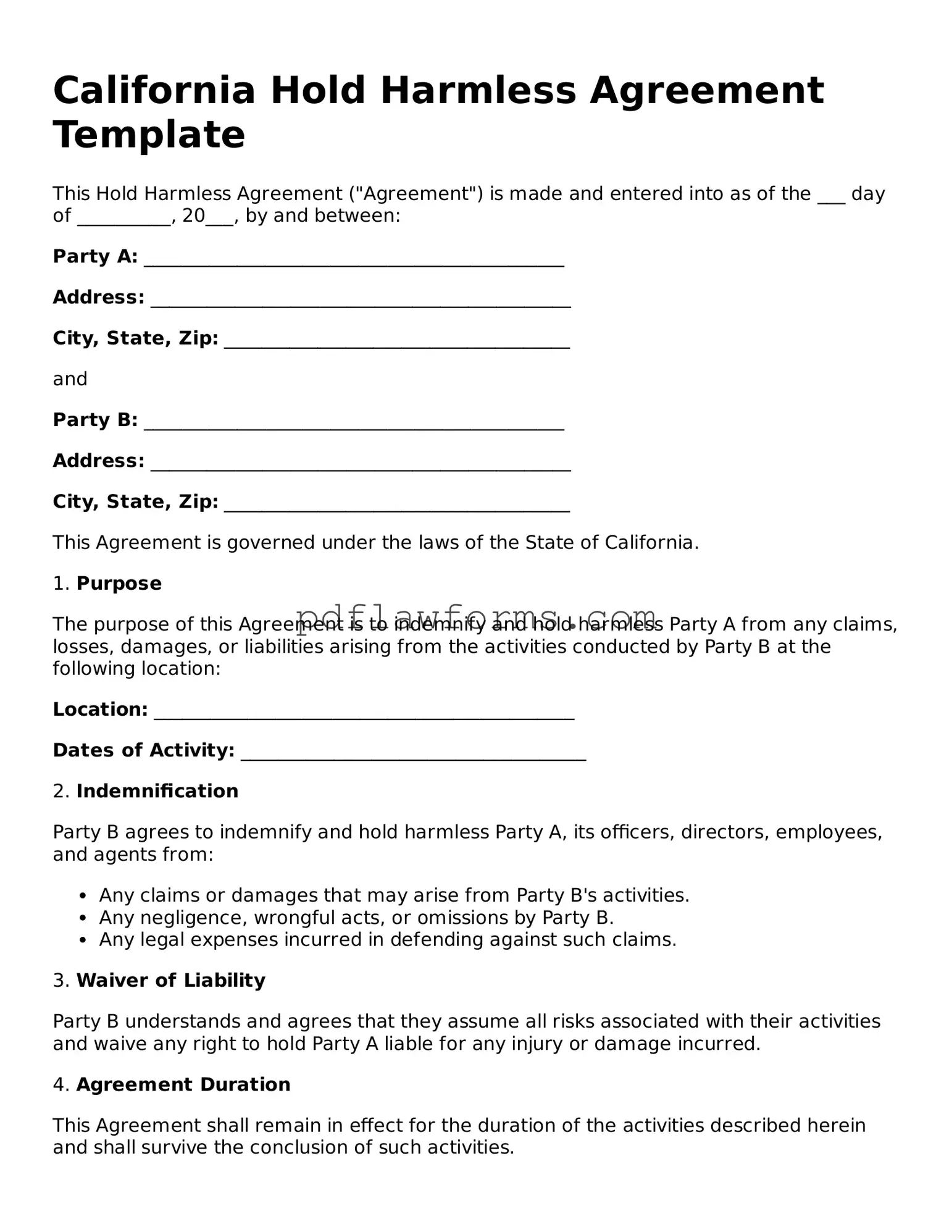Filling out a California Hold Harmless Agreement can be straightforward, but many individuals make common mistakes that can lead to confusion or even legal issues. One frequent error is failing to read the entire document before signing. This form contains important details about responsibilities and liabilities, and overlooking any section can result in misunderstandings later.
Another common mistake is not providing complete information. When filling out the form, individuals often leave out essential details such as names, addresses, or specific activities covered by the agreement. Incomplete information can render the agreement ineffective, as it may not clearly outline the parties involved or the scope of the hold harmless provision.
People sometimes misinterpret the purpose of the Hold Harmless Agreement. It is designed to protect one party from legal claims or damages caused by another party. Misunderstanding this can lead to signing the agreement without fully grasping the implications, which could expose someone to unexpected liabilities.
Additionally, individuals may neglect to date the form. A date is crucial for establishing when the agreement takes effect. Without it, there could be disputes about the timing of the agreement's enforceability, complicating any potential claims in the future.
Another mistake involves not having the agreement witnessed or notarized when required. While not all Hold Harmless Agreements need to be notarized, some situations may call for it to ensure authenticity. Failing to follow this step can lead to challenges regarding the validity of the agreement.
People often forget to review the terms and conditions carefully. The language in these agreements can be specific, and any ambiguity might lead to different interpretations. It is essential to ensure that all terms are clear and mutually understood by all parties involved.
In some cases, individuals may sign the agreement without consulting a legal professional. This can be a significant oversight, especially if the agreement involves substantial risks or liabilities. A legal expert can provide valuable insights and help ensure that the agreement is fair and comprehensive.
Lastly, individuals might fail to keep a copy of the signed agreement. After all parties have signed, it is vital to retain a copy for personal records. Without it, proving the terms of the agreement in case of a dispute becomes much more challenging.
